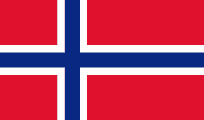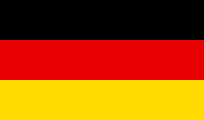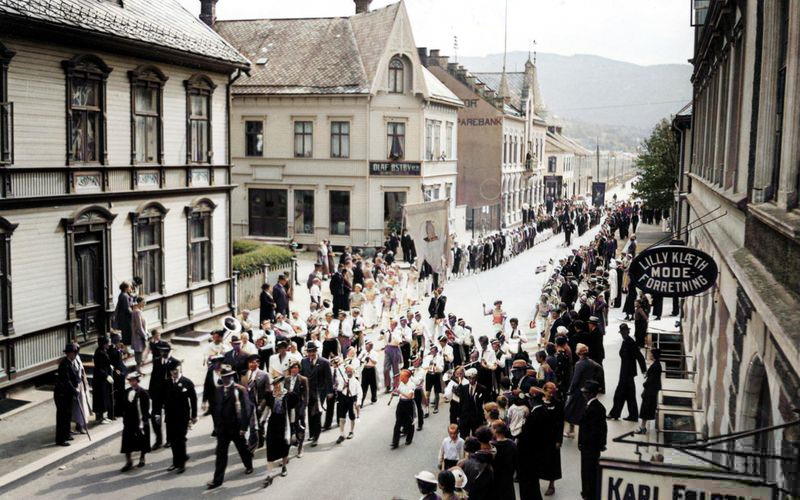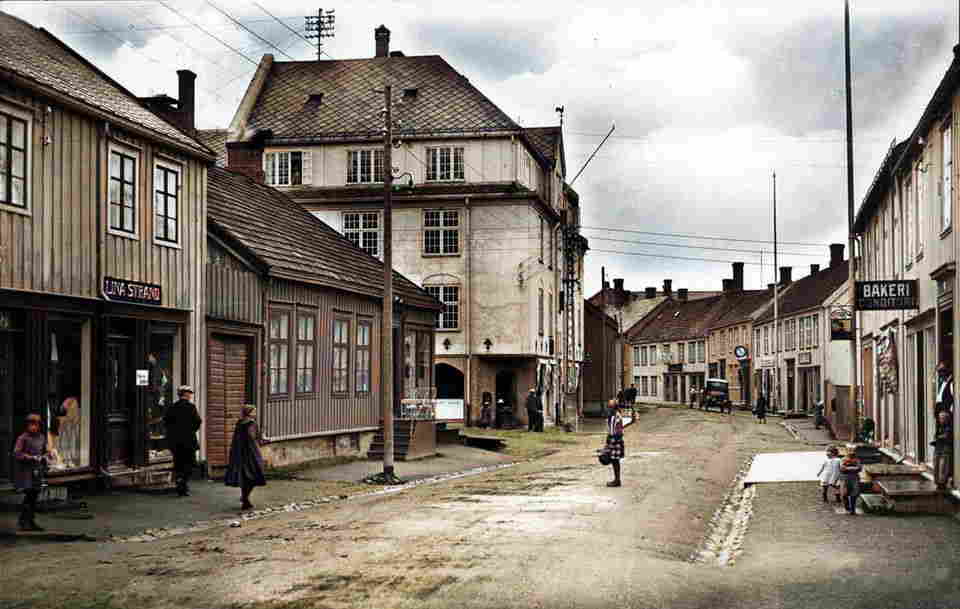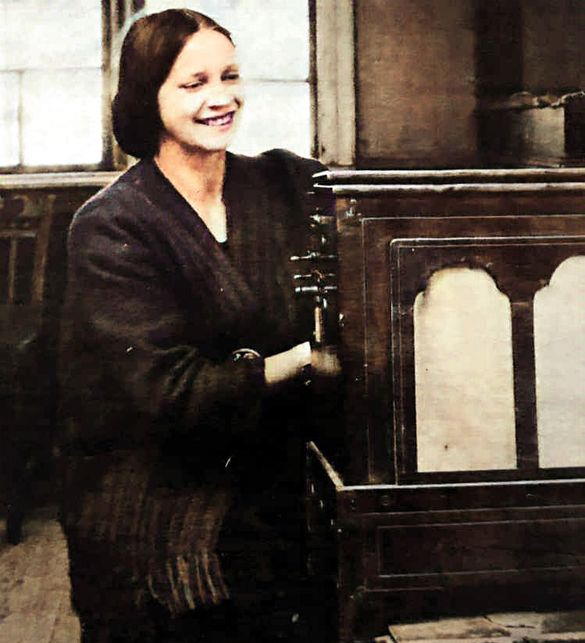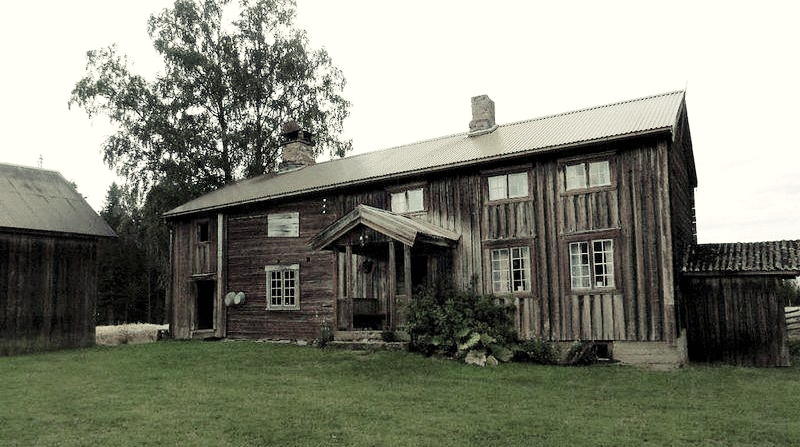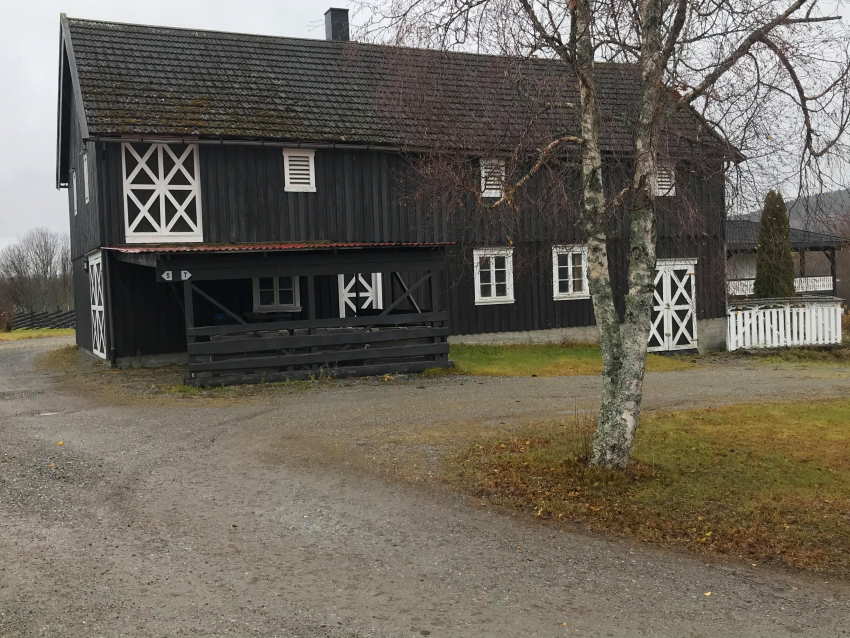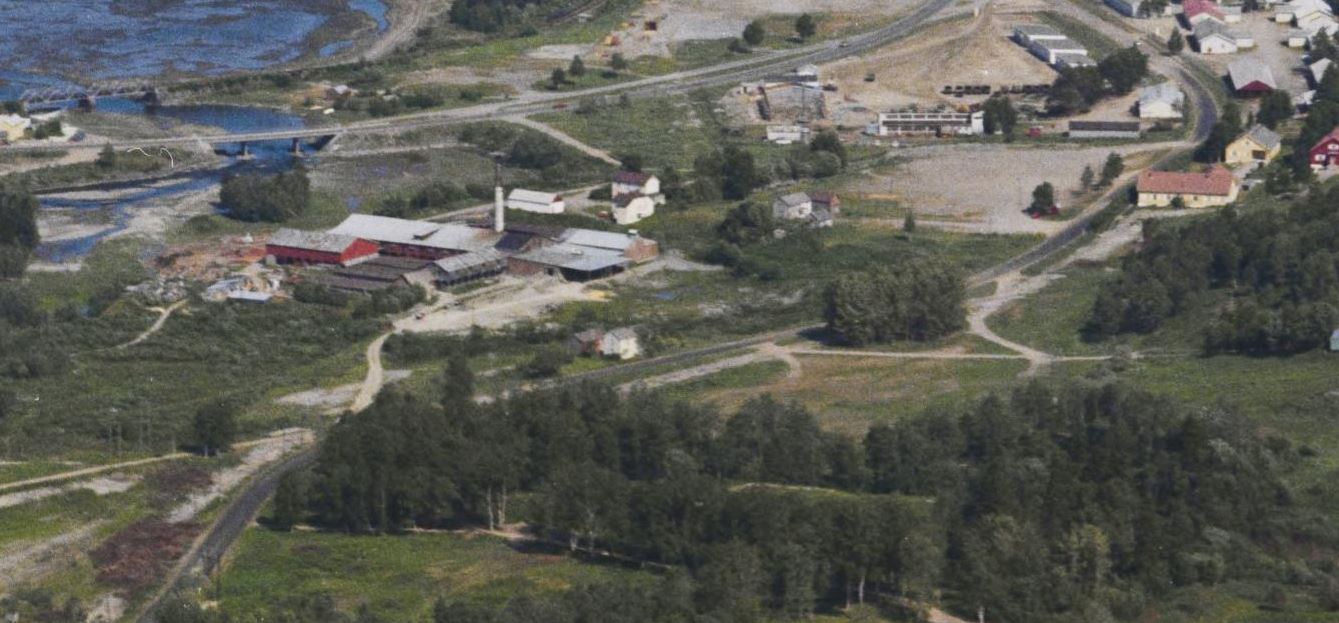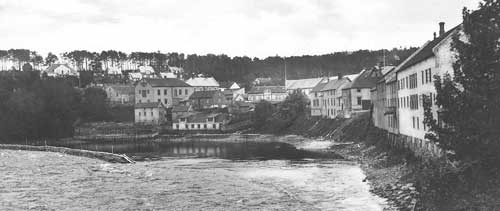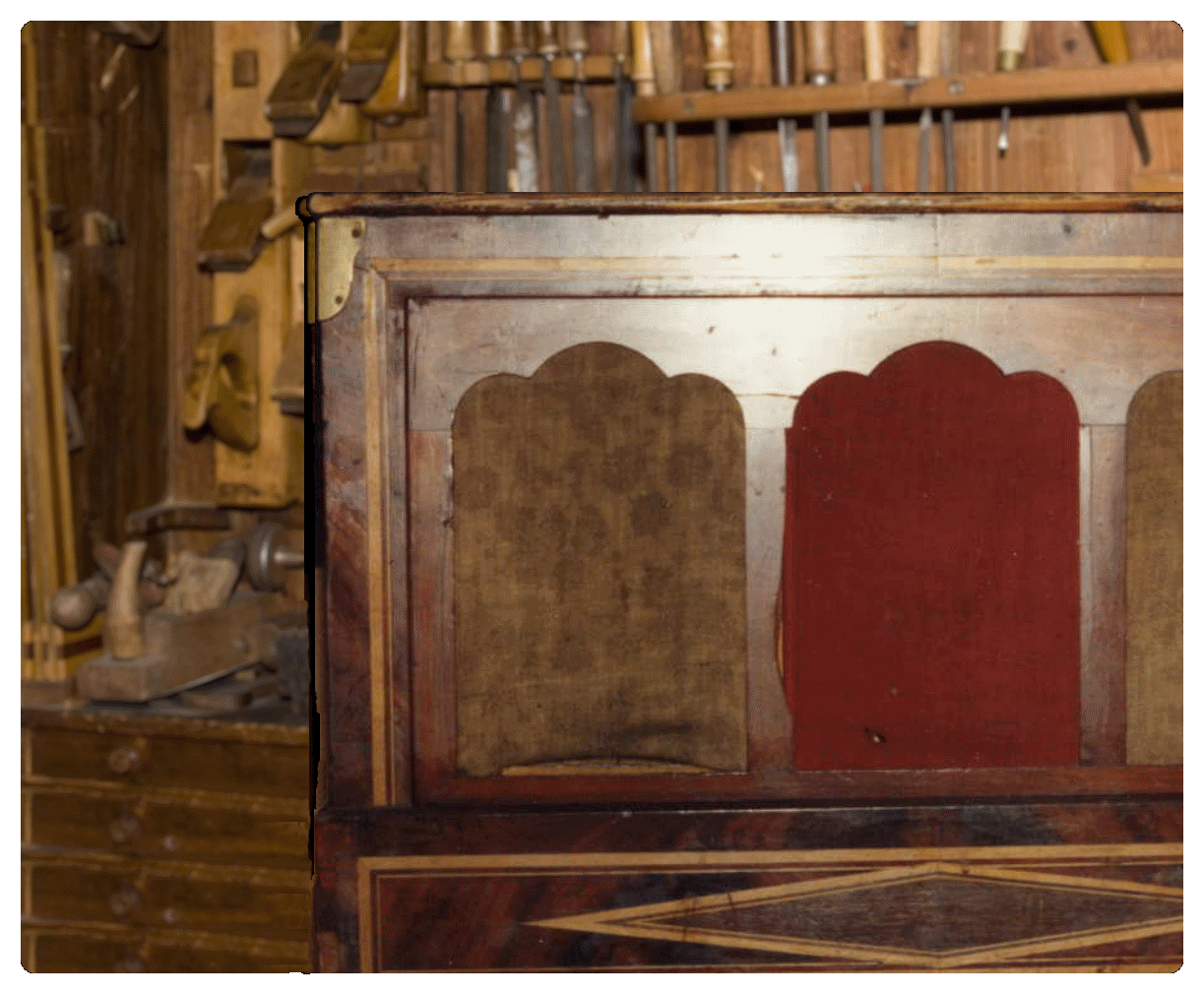
THE INSTRUMENTMAKERS
The story about instrument makers
the town Steinkjer and the muncipality.
Navigate in the above map to see the location of each instrument maker's workshop. Click the markers to read about each one, and use the Pegman to see images for how the area looks today. If you want more info about the most known positive makers in Innherred, you can roll downwards and read more.
Thomas Fosnæs
Thomas Fosnæs was by trade a clockmaker and a positive maker. Most importantly, he was the musician who stood above all other musicians both in Beitstad and in the neighboring villages at the time. In playing the violin, his stroke, his double stops and his tone really stood out. Thomas gave a true sense of "life" to his performances compared to other violin players from that time. One person performing a concert with Thomas said that the well known violin player Stefi Geyer had not at all the same hand as Thomas's playing.
Thomas Rasmussen Fosnæs was born in Fosnes on the 29th of November, 1813. His parents were Rasmus Thomasen Stavrum and his wife Beret, daughter of Peder Eriksen Voldseth in Verran. Thomas was the second oldest of 11 children. He took the name of the farm where he was born, and married on the 29th of July 1847 to Maren Marta Olsdatter, born in 1822. She was the daughter of Ole Andfindsen Opdahl, from Utvik.
Thomas proved to be a socially engaged man, and wrote, with other men from Beitstad, a letter to the King with a plea for releasing Benjamin Olsen Benum (or Sprauten) who under heavy drinking had beaten his father. Benjamin's mother had turned her son in to the police for this act, and the punishment Benjamin received was probably much harder than his mother and the others did have in mind, since he was convicted to be hanged and to pay the legal costs. Benjamin appealed the sentence, and was eventually pardoned to life imprisonment. He was taken to "slavery" in Trondheim, to work the rest of his life on the fort there. Twenty of the men in Beitstad, Thomas Fosnæs included, wrote a letter to the King, asking that Benjamin be released. Benjamin Olsen Benum was then pardoned by the King and set free by the King's resolution 15/3 in 1841. The reason he was set free was that his parents were not without guilt in what had happened, since he had a "poor upbringing", becoming the man he was. Another of the men signing this letter was Paul Landsem, who in time also became a positive maker. Paul Landsem and Thomas were known to each other, so perhaps the instrument building in Malm was influenced by Thomas, a fact which now suggests that the positives made in Beitstad are closer to the Steinkjer positives than was known earlier.
Thomas was quite involved in local society, and his name appears in several places. Sivert Arntsen Klæth in Beitstad, a money-lender, was known for his rough and ruthless exploitation of people's lack of money. Through his actions Sivert managed to arise the entire community against himself, and there was a special hearing at Østvik for interrogation of Sivert and many witnesses. Magistrate Hannestad handled all the complaints acccording to protocol. Among these complaints were those of Thomas Fosnæs.
In 1848 Thomas Rasmussen Fosnæs got a contract for a piece of land from Nedre Sjefte, and at that time he moved with his family to onto his own smallholding by the seaside, west of center of the town. The part of the city called Sneppen (the name means the small "cut-off" in English) got its name from the fact that this piece of land for 30 homes were cut off from the town when the railways were laid through the town of Steinkjer in 1905.
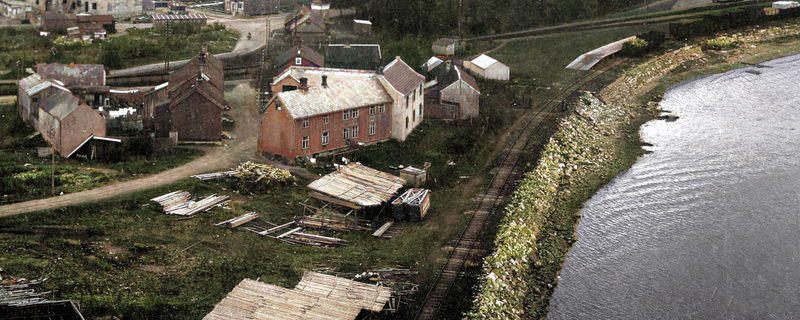
Sneppen in Steinkjer after 1905.
At this location he established himself as a clockmaker and instrument maker, skills which were self taught. He had already dealt with making instruments before he moved from Beitstad to Steinkjer. The instruments he made were mostly barrel organs, which at the time were becoming popular. In addition to pinning the barrels on the instruments he made himself, he also pinned barrels for instruments made by others who had not mastered the art of pinning. Thomas's descendants describe him as a bit of a perfectionist, and this is visible in the music and the instruments he made.
In Steinkjer Thomas got a job as an overseer of the muncipality's economy. this is mentioned in a letter to the presidency, 23rd of February 1859, from Thomas Fosnæs, Petter Andersen and Johan Riis. That letter presents the case for avoiding, if possible, the immigration of poor and sick people to Steinkjer. As overseers they performed some examinations, and found several poor and sick families who had immigrated the previous few years. They showed that the sheer number of people with poverty and sickness would increase in the time to come, and that this might be too much of a burden for the muncipality of Steinkjer to bear.
After moving to Steinkjer, Thomas continued to be the the most sought-after violin player for weddings and other events, both in Beitstad and in the area of Innherred. His musicality and the skill of his playing was the topic of conversation, even after he had established himself as a well known positive maker. One of the last positives he made is in Hammer in Beitstad. It is numbered 1870, which was the year he died.
His daughter Karen Dorthea Fosnæs born, in 1867, was confirmed in Vår Frues church (Our Lady's church of Trondheim) in 1881, as having the address Fjordgate 29 in Trondheim and being registered as born in Steinkjer. The church book register must have been done after Thomas was deceased, because it also records that the widow moved to Trondheim with their six children.
Thomas's son Adolf Bertinus, born in 1854, became a well known organ builder. He delivered 61 church organs, including the ones in the Stiklestad and Kvam churches. His initial introduction to organ building was probably through helping his father make positives.
The houses in Sneppen were on Strandgaten ("Beach Street") in 1882, which is named Kristian Kristiansen Street today. The croft where Fosnæs lived, at Strandgaten 67, is today Kristian Kristiansens Street 6.
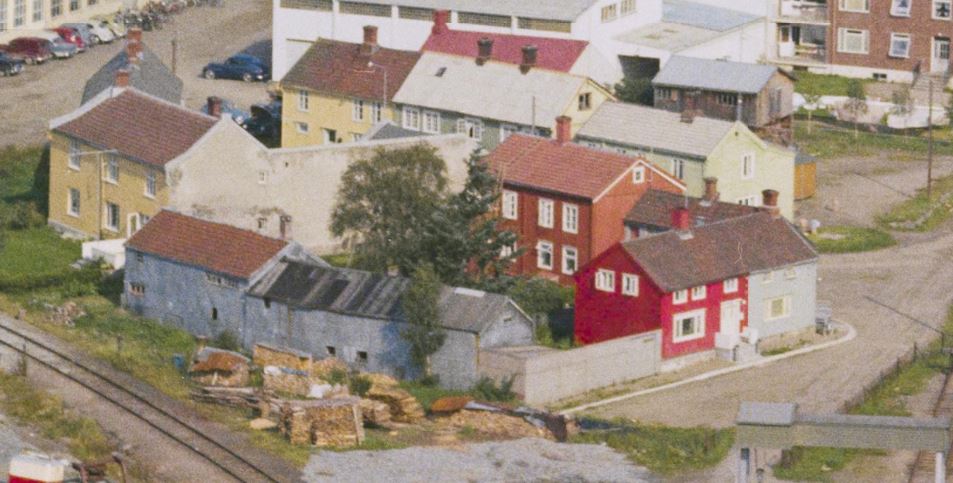
Strandgaten 67 is the house painted brown-red approximately in the center of the image above. The picture was taken in 1964, and the area around have been changed quite a bit due to the two city fires and the landfill around the seaside in Steinkjer. The house still exists, and survived both the city fires in 1900 and in 1940.
Christian Tharaldsen.
Christian Tharaldsen was a diverse man, mostly known as an instrument maker and brazier (brassworker). He cast bells that had a rare and beautiful sound, and was very sought after. He also made rings in brass which he called engagement rings, and when someone asked if they were made of gold, he answered: "They only look like it!" He did not want to fool anyone. His work with brass led him to association with Thomas Fosnæs who was already building positives in 1850. This contact surely was the start of Christian's life-long work as a positive maker himself.
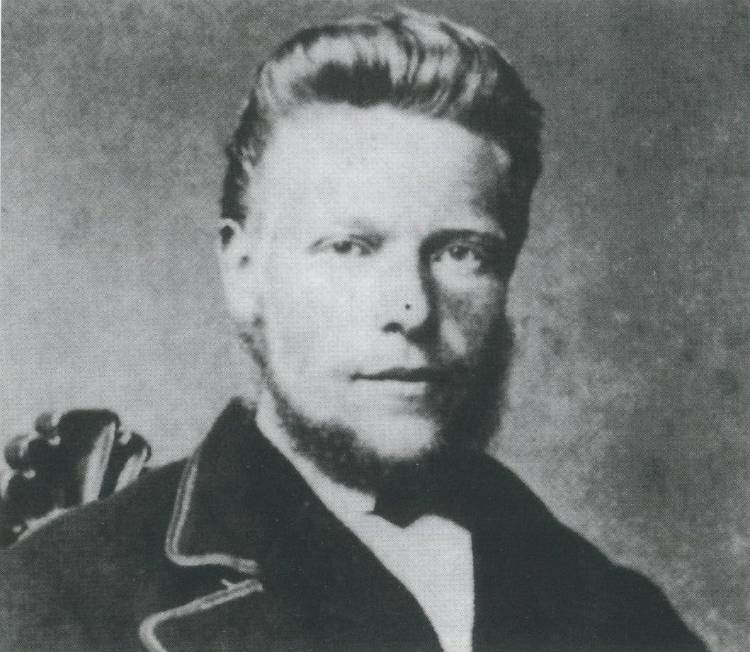
Kristian Taraldsen, born the 1st of February 1839, was the son of Tarald Olsen, at a place called Smistad. Kristian had a younger brother, Tørris Taraldsen, born in 1848. Smistad is the first place to the right after turning towards today's Fergeland. The place today is called Fagereng, and has the address Fergeland 19. Kristian Taraldsen changed the spelling of his name gradually to Christian Tharaldsen. In 1866 he married Bergitte Schei, who was born the 15th of February, 1839. Two years later he became a crofter in the place Sveet, which was located beside his father's place. Christian and Bergitte had three children, Tarald Peder, Karoline Serine and Berntine Karoline.
In 1877 Christian leased some additional property from the farm Skjefte, "a piece of land, located by the place Sveet, called Elveenget." The lease was written to "Christian Tharaldsen and wife and children", and it was a life-long lease.
Christian was in many ways a quite a multi-talented man, making brass lures for the English salmon fishers or sewing cabinets for housewives. He was a very skilled cabinetmaker, with barrel organs, or positives, as a speciality. He was not alone with this business in the family, Christian made the internals and a lot of the decor, while his brother Tørris made the exteriors. The melodies were pinned to the barrels by Jacob Sakariassen Schjefte in Steinkjer. The first positive was made around 1867 in pine, later he made the positives using hardwood such as walnut and mahogany. All in all Christian stood behind around 400 positives.
Christian was a brazier, a trade he had from his father who also was a brazier. Below are wooden forms used to cast the brass parts of a barrel organ. The parts were also used in other instrument-makers' positives, bought as parts from Christian's smithy.
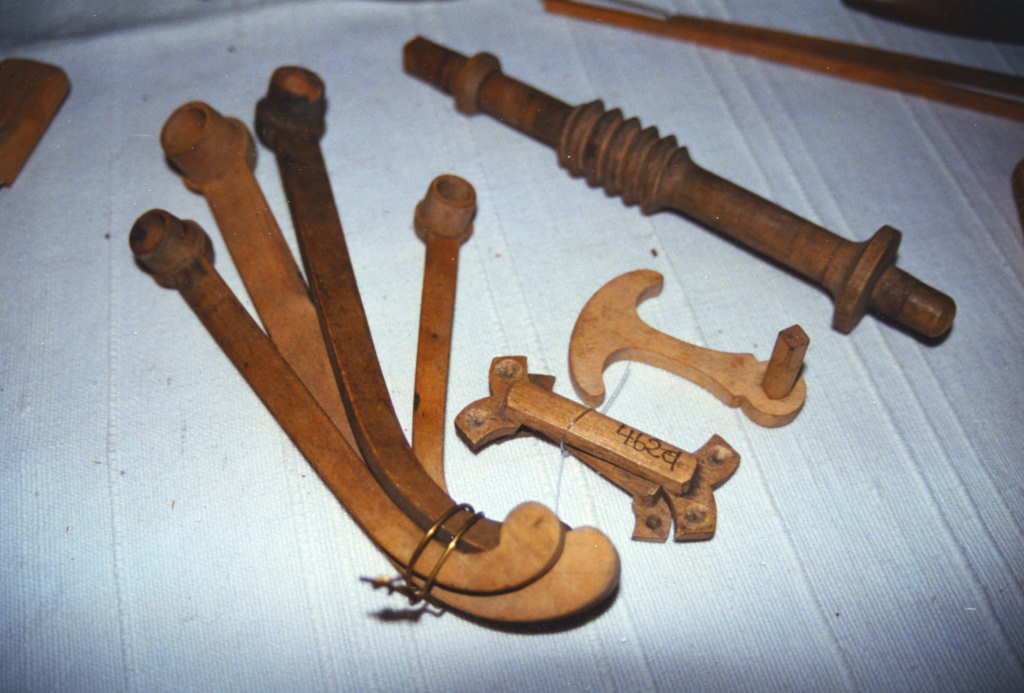
At the county exhibition in Steinkjer 1891, Christian was awarded second place for "pretty and exact intarsia work, carpentry and brasswork on a positiv."
Also listed in the written stories about the exhibitors in the 9th annual Norwegian farmers meeting in Trondheim in 1887, "Christian Tharaldsen Steinkjer, got 3rd place, bronze medallion for a small positiv." which the later instruments where marked with with a paper sticker. It might be worth noticing that the value is set to 240.00 kroner. Perhaps the price for a "small positiv" at that time was 240 kroner. With inflation calculated this will be approximately 20,000 kr in today's money.
Christian was well known in Steinkjer, not only as one of the founders of Steinkjer Arbeidersamfund (Workers' Society), where he was active his whole life, but also other clubs and unions. In Innherredsposten (the Innherredspost newspaper, from the Innherred district) from 1888 we can read about Christian having been elected as member of the board of the Steinkjer Rifle Shooting Club of which he was one of the organizers. In 1892, we read about him election to the supervisory committee for the Midjo school district. These reports show him as an active and community-engaged man. As a member of the Steinkjer Arbeidersamfund, he proposed at the annual general meeting on Sunday the 27th of December, 1885, taking the initiative for an industrial exhibition in Steinkjer.
In 1904 Christian was employed as supervisor during the timber floating in Ogna, where he kept watch for possible petty theft of timber or firewood.
Christian Tharaldsen was a very good rifle shooter, and an eager member of Steinkjer Skytterlag (shooting team) through a couple of generations. He was a very eager and skilled hunter and sports fisher. It is likely that nobody caught as many salmon in the Ogna and Byaelva rivers as him. The Byaelva river was often visitied by English sport fishing lords, but it was as late as in the 1890s before they were led up to the fishing spots in the Ogna. These are all the way up to the waterfalls Brandseggfossen and Fossemfossen which are located a few hundred yards apart by the farm Fossem. Ogna might not have been as valuable for fishing as Byaelva, seen from a sports fisher's view. The river Ogna was more variable in waterflow. The best time was probably early in the season, where the Ogna the best river to fish. The salmon migrated up the river a week or two earlier than Byaelva, and this extendes the fishing season, according to the Englishmen.
Christian Tharaldsen was Ogna's best local guide, and he was already an old man when he came in contact with Captain Molyneux, who had organized the fishing for the English salmon lords. In the beginning Tharaldsen was a part of the fishing trips in Ogna, tutoring about Ogna's special properties, and how the level of water in the various places should be at its best, and about the river's other distinctions.
Not many years passed before Tharaldsen became too old to be a part of these fishing trips. The last trip he attended ended up to be a small tragedy for both Tharaldsen and the Captain leading the trip. When they fished in Bruemshøla on this trip, they hooked a salmon which was 6-8 kilo, and when Tharaldsen was about to use the gaff, it caught over the tip of the fishing line, broke it, and they lost the salmon. The Captain's temper overstepped the line, and he grabbed the walking cane he always had by the belt, and hit Tharaldsen over the back. But he regretted it straight away and he slammed his fishing pole to the rocks and disappeared into the forest. "Tharaldsen replied, he did a bad catch, but there were no need to do this..." and he told Carl Lian who attended the trip at age 13. "You need to go an look after him.". When Carl found the Captain, he was sitting on a tree-trunk moaning to himself about being such a pig to an old man. After some time sitting there, he walked back to Tharaldsen and asked him for forgiveness. This became Tharaldsen's last fishing trip with the Captain, but they restored the friendship and kept acquainted for years Tharaldsen regularly kept the Captain updated about the water levels and the possibilities for fishing in Ogna. Tharaldsen was compensated for the incident.
Christian Tharaldsen fished a lot in Ogna, and he hooked the largest seatrout ever caught in that river. The weight was 7.5 kilo and it was hooked in Ferghøla. The last salmon he caught was in the summer of 1921, which was his 72nd season in the river.
Elveenget is today a part of the piece of land along the road to Ogndal and down towards Steinkjerhallen. This whole flat area was a part of the cropland to Ner-Skjefte and includes the area of Steinkjer Campus, and most of the properties according to today's maps are numbered with lease number 189. The actual identity of the piece of land that Tharaldsen once leased, named Elveenget (which means "the river basin") and close to his smallholding is not certain. It might have been part of today's Elveenget, but it might also be another plot of land since it is stated to be closer to where he lived.
SVEET, property number 9, the former croft with the same name on Skjefte's ground was separated from the farm in 1910, and sold to the crofter at that time, who was Christian Tharaldsen. The smallholding had an area of approximately 15000 square meters. (3.5 acres).
After the separation, Christian became the owner, and he lived there until he died the autumn of 1922, 83 years old. The buildings of Sveet were located where the address today is Taraldsentrøvegen 3 and 5. The sole building from Sveet, is the at today's Taraldsentrøvegen 5.
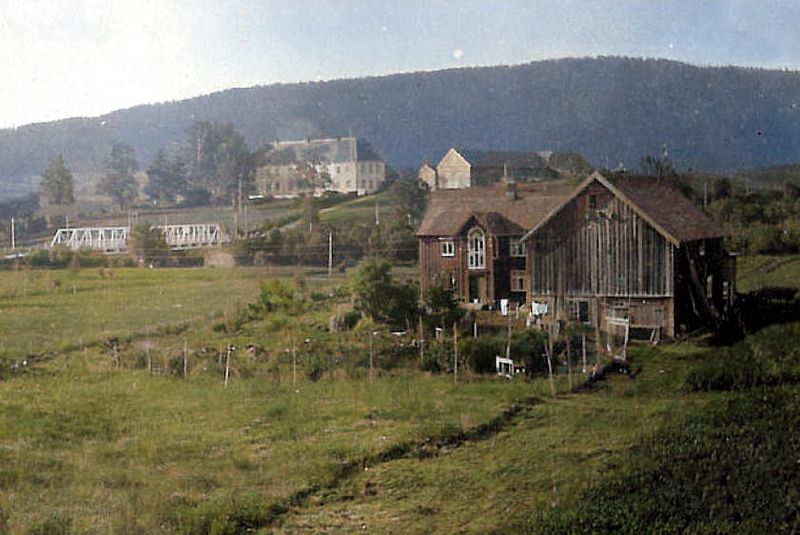
The place Sveet
The property with today's buildings is not as large as the 3.5 acres it was listed to be. That time's Sveet consisted of Tharaldsentrøvegen 3 and 5, including the field behind, framed by Tharaldsentrøvegen.
Jacob Schjefte.
Jacob Skjefte was the son of Andreas Skjønborg sister from Midjoplassen Skjønborg. Both Andreas and Jacob learned to play the violin from Thomas Fosnæs. And this was probably the connection through which Jacob started his work of pinning the barrels used in the positives made in Steinkjer.
Jacob Sakariasen Schjefte, born on the 20th of September, 1841, son of Sakarias and Anne Margrete was a shoemaker by trade. He gained most of his fame as a positive maker. Jacob Schjefte "pinned" the music in positives made by others, among these were Ola Fjeldhaug in Egge and Christian Tharaldsen from Midjo. Jacob married Olava Margrete Johannesdatter Frøsethplass, born the 28th of July, 1842. They had a daughter named Marianna, born the 15th of June, 1864. And in 1865, they were lodging at Teodor Welde at Søndre Street 140 in Steinkjer. This street is today named Svein Jarls Street.
In 1854 Teodor Welde moved to Steinkjer, and had a carpenter business a few years, before he started to trade. It is possible that Jacob learned the carpentry trade in addition to his own, being a shoemaker the years he was lodging with Teodor Welde.
His daughter Marianna married the painter Ole H. Ramstad in Steinkjer, and it was their child Oskar Ramstad for whom Schjefte made a small positive. This little positive is now located at Ringve Museum.
Jacob Skjefte was an active rifle shooter in the Ogndal shooting club, and he participated in a rifle shooting contest in 1907, where he placed 8th, with 20 points. The prize was 7 kroner. He was active in the club as late as 1930, where he won with 151 points. Jacob was a member of the Sparbu brass band as late as in 1934, even though he was nearly 93 years old at that time.
From 1875, Jacob Skjefte and his wife Olava, with the children Mariana, Ragna Antonina, Sigurd, Hanna, Laura Matilde, Johanna Margrethe and Oskar Adolf, lived at Øvre Elvegade 194, Flat 1. This is listed in the census from 1875 until 1900.
The newspaper "Indtrøndelagen" reported on the 7th of September, 1910 that Jacob was relieved of taxes due to illness. The claim of taxes due for the year 1910, to be paid to the Steinkjer muncipality, a total of 11.09 kroner, is abandoned due to his sickness and being unable to work.
Øvre Elvegate was one of the towns oldest streets. It was laid out around 1850/1860, determined by the shape of the (meaning "The steep river shore at Ris") by the river and the the road to Ogndalen. The street led from town square, where the old Steinkjer farm still existed, up along the river with houses and small holdings between the river and the street. The street had a bend towards northeast by Lilletorget, Steinkjers smallest square, where the street found its way up to Ogndalsvegen. Lilletorvet was located in today's corner of Skolegata and Elvegata.
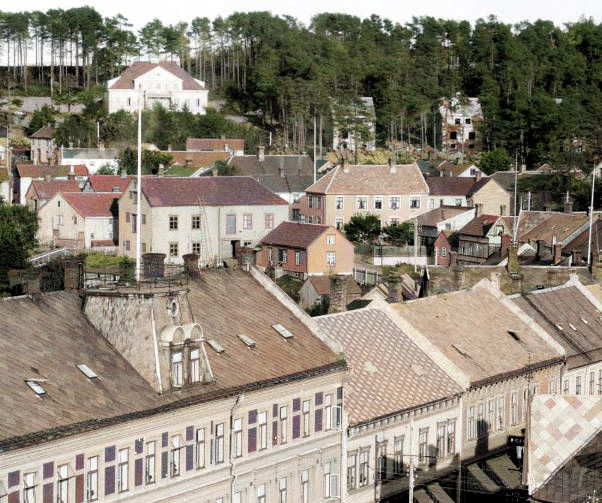
Øvre Elvegate no. 194 is today part of "Påssåbyen" and the house was located about where Eirik Jarls gate 21 is today.
Theodor Bentzen.
In addition to being a smallholder, Theodor Bentzen was also recognized as a master bricklayer and an instrument maker. For this last he was widely known for the excellent instruments he made. It is not impossible that he knew Thomas Fosnæs through being a violin maker. Bentzen and Schjefte pinned music for most of the barrels in the Steinkjer positives.
A picture of the south side of Steinkjer, with a view of Trana in the background where Bentzen worked as a brickmaster.
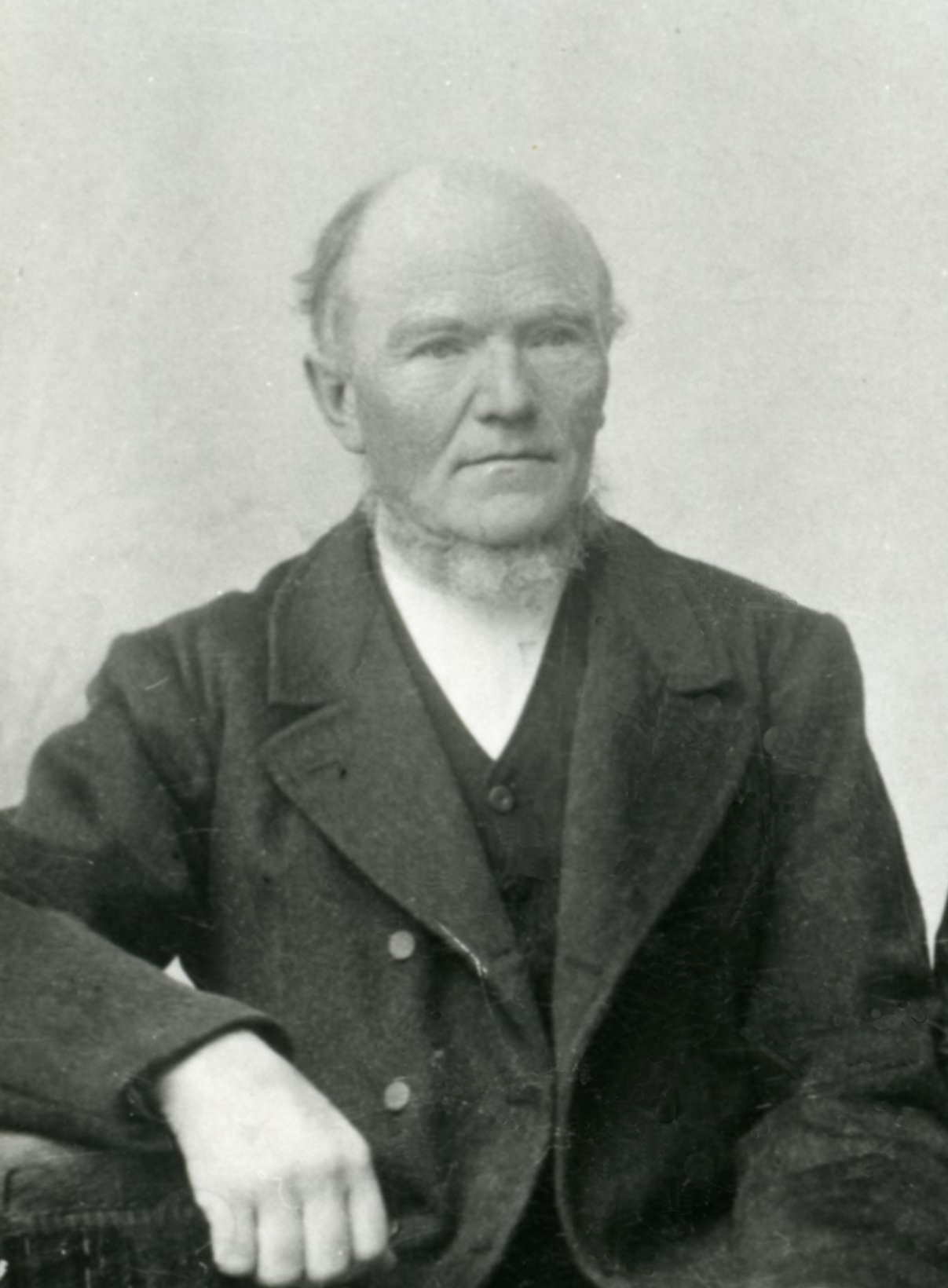
Theodor Nilsen Bentzen was born on the 12th of September 1843 to Niels Peter Bentzen and Ingeborg Marie Tølløvsdatter in Vang (Vangen) a croft under Trana with his siblings Johan Kristian (1845), Ludvig Andreas (1848), David Andreas (1851) and Niels Petter (1854)
Ingeborg Marie's parents, Tølløv and Maren Andrea lived in Aunet, a croft under Øvre Trana. After Maren Andrea became a widow, she had the place for a few years. It was later taken by Theodor's brother Paul Oleaus.
Theodor married Ingeborg Johannesdatter Kjørås, born the 17th of December, 1842. They had five children, Karoline Josefine (1867), Nette Pauline (1869), Tølløv Andreas (1872), Tora Jakobine (1876) and Dorthea Oline (1881).
Theodor advertised in Innherredsposten about accepting positives for repair. He built violins and was able to play them, and could read sheet music well enough to pin barrels for positives. In the census in 1865, he was listed as a instrument maker, and this gives reason to believe he already had a connection to both Fosnæs and Tharaldsen who were building positives at that time.
The census from the 3rd of December, 1900 lists Theodor Bentzen as living in plot number 54 and lease number 1.
Crofts under Trana were listed
as a part of the main farm without additional description. What is known is that Theodor lived in Tranabakken, probably as a crofter, and there are not
many places under Trana which fit that description.
Vangen is the most likely candidate, since it was located in Tranabakken, and his parents were crofters there. These clues makes it probable that he did take the place after his parents.
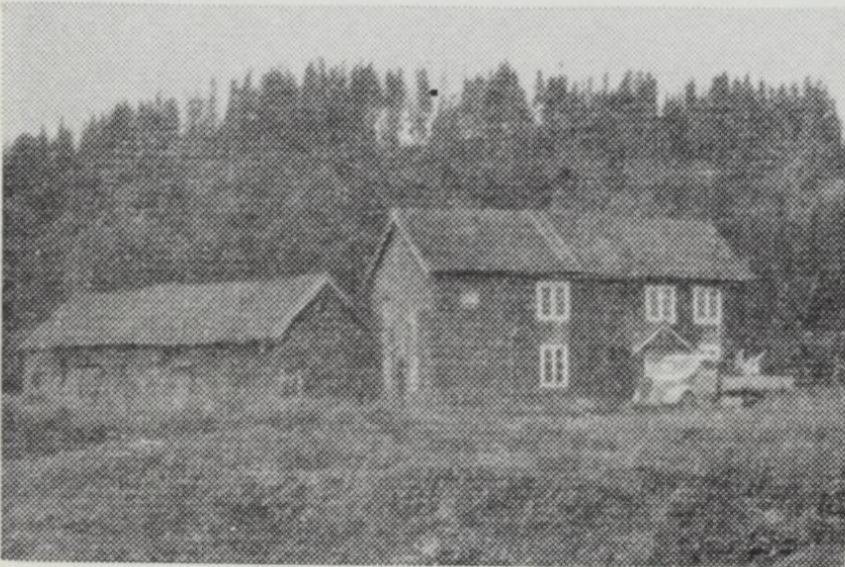
The place Vangen was located close to the Trana brickwork factory, where new settlements had arisen after the Sannan military camp had closed. The location was in the north area of the brickwork factory, approximately where the Jula department store has a parking lot today..
Tørris Tharaldsen.
Tørris Taraldsen was the brother of Christian, and had the same trade as his brother, brazier, which they both had from their father. He got 3rd prize, bronze medal, for some brass casting work he displayed at the 8th ordinary Norwegian Agricultural Meeting, and the 3rd Nordic Seed Congress in 1887. Tørris exhibited a harness of nickel silver, a harness in brass, a belt with a nickel silver buckle, a fishing reel, a glockenspiel, a cowbell and a sleighbell. All of those things involved mechanical precision and demanded good handwork for their completion. This testified to his expertise and showed him to be a worker of the highest class.
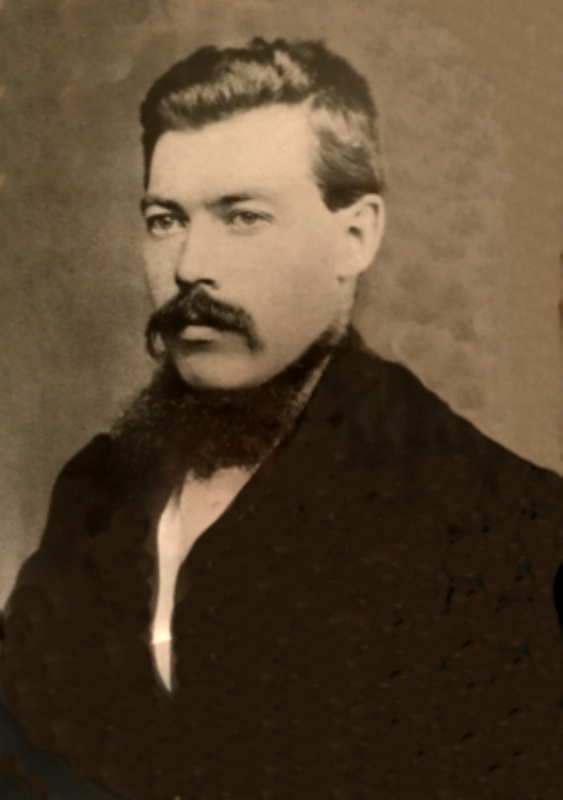
Tørris Severin Taraldsen, born 1848 was the son of Tarald Olsen from the place Smistad. He grew on this place with his brother Christian Tharaldsen. The former croft called Smistad (and also called "Taraldsplace") is the first to the right after turning in towards today's Fergeland. Tørris is the last known crofter on the place.
In 1873, Tørris lists the following advertisement in the Innherred-Post: "Sewing machines are accepted for repair by T. Tharaldsen, Midjoplace". In 1878 he got the council's permission to sell Bavarian ale under the Batallion gathering at Sannan, for a fee of 8 Norwegian kroner.
Tørris married Karoline Knudsdatter Skillegrindbakken born in 1847, and he took the place after his father. Tørris was instrument maker and a brazier. He died young in 1891, at 43 years of age. After Tørris's death, the family disappeared from Fagereng, but in 1900 both Karoline and Marie are listed living in Bakkestredet 120, Steinkjer.
Harald Sakshaug had a converstion with Alf Eskin, who is the son of Tørris's and Karoline's daughter Olga Wilhelmine, born in 1888. Alf remembers his grandfather and explains that "Christian makes the instrument, with the barrels, while Tørris makes the crates". This translates to the fact that Tørris makes the wooden crates in which the instruments are stored and transported, even if the written texts also lists Tørris as instrumentmaker. Alf Efskin also explained with a smile that Christian liked publicity quite a bit more than his brother Tørris.
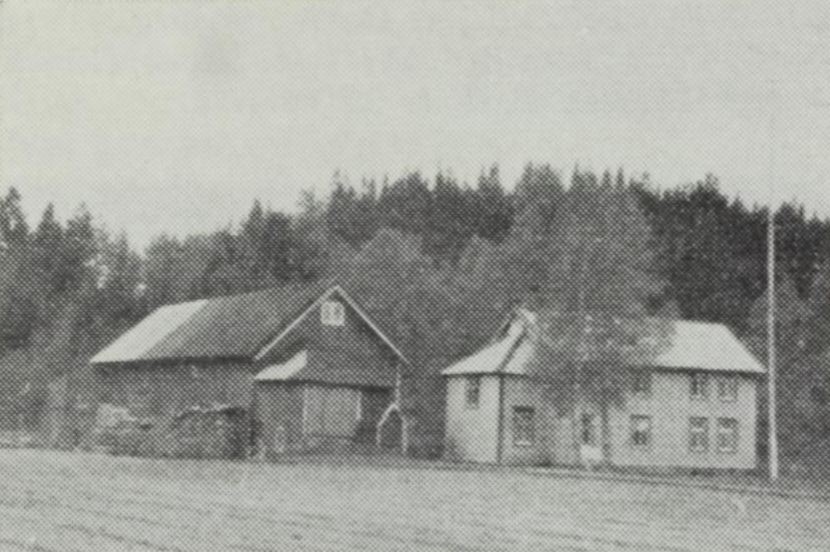
The place to Tørris was converted from a croft to a self owned place in 1905 with the name Fagereng, with lease no. 2 (Todays Fergeland 19).
Ola Fjeldhaug.
Ola worked in the brick factory at By in the summer, and on his farm and forests in the winter. In his spare time he would often be found in his workshop. He made furniture and he made violins. In cooperation with Jacob Schjefte he also made positives. Ola was the carpenter, Schjefte pinned the barrels.
Ola Kristiansen Fjeldhaug born on the 16th of September, 1829 at Fjeldhaugen, a croft under the farm By. He worked in the By brick factory in the summer and on the croft and forest in the winter. In his free time Ola was often found working in his workshop. He made furniture and he built violins. In cooperation with Jacob Schjefte he also made positives. Ola was the cabinetmaker, Schjefte pinned the barrels.
Ola Kristiansen Fjeldhaug is listed as a crofter under the By farm, in Egge, Steinkjer in the census of 1810. Plot number is 39, under farm number 2 with lease number 1. Ola is listed as living with his daughter, Rikke O. Fjeldhaug born the 29th of September, 1868, on the croft Fjaldhaugen a little ways up the hill at Byaenget. It is reasonable to believe that Rikke moved from the place when her father died, after the census in 1910. The place was probably free from there on.
The plot 195/143 is today named Ola's place, and is located at Fjellhaugen. This is probably the original croft called "Fjeldhaugen".
The plot to the side is called Byborg, and Hilmar Johannesen Hjelde became the crofter there, and changed his name to Fjellhaug at the same time. That name is the origin for everyone in Steinkjer named Fjallhaug today. There are no known photograps of the place called Fjeldhaugen, only pictures of the neighboring place Byborg.
Ole H. Ramstad.
Ole H. Ramstad was born in Øvre Tverås in Malm to his parents Jacob and Karen Tverås. Ole is listed as an instrumentmaker in the census from 1885, with the same address as Jacob Schjefte in Øvre Elvegate. Since he eventually became the son-in-law to Jacob Schjefte, it is likely they cooporated making instruments and barrels. This would indicate that there was a substantial demand for positive barrels in the period.
Ole Henrik was born in 1857, and after being confirmed he went to work with Petter Foslie, and for a period he moved to the farm Ramstad in Abelsvær. He liked the farm and nature there so very much that he took the name Ramstad. After a few years, Ole went back to Steinkjer to do his military service. After that he started to work for Jacob Schjefte, where he pinned barrels.
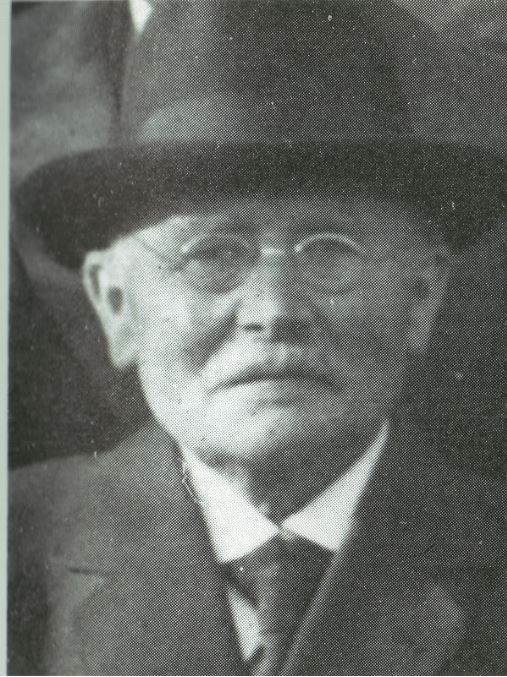
Ramstad worked with Schjefte for two years. After that he picked up the paint brush again, and worked with the painter Holemo, in his workshop in the Sneve building at the north side of Steinkjer.
While working with Jacob Schjefte, pinning positiv-barrels, he needed help from Schjeftes daughter. To get the pins in the correct place, she had to sit and sing the music. As she was sitting there singing, he missed a pin, and it hit him in the heart. The young couple went to the church in pouring rain, to be wed by priest Frost on the 18th of October, 1883. They were all wet when they arrived at the church, but dry and warm, happy inside. In marriage they had five children, three boys and two girls.
Mathias Klæbo.
Mathias Klæbo lived in the north side of Steinkjer, where he was a carpenter. The address listed in the census was Kongens Gate 91, which today is where the Samvirkelaget (the Cooperative) was built at today's Kongens Gate 7.
A view along Kongens Gate on the north side of Steinkjer, looking towards the end where Mathias Klæbo had his workshop.Mathias married Johanna Mariane and worked as a master carpenter. Mathias mostly built house instruments, but traveled about to tune pianos. Both Følling church and Kvam church have an organ built by Klæbo in 1878 and 1880. It is also believed that Mathias built a transportable barrel organ for the preacher Finn-Torkil from Snåsa.
It is not clear if the writing refers to the small portable organ which Finn-Torkild carried when he rummaged about the mountains, or if it is the other instrument which Finn-Torkil also owned. Finn-Torkild (Torkild Jonassen), was a musically gifted man, and he had two portable organs. One was a small playable organ, which could be opened to have on his knees when he was sitting. To the side facing towards him there was a keyboard, and on the other side was a bellows which could be operated with his foot. That organ was built by Mathias Klæbo.
Mathias Klæbo was born the 24th of January, 1820, and his wife Johanna Mariane Klæbu was born the 13th of February, 1840.
Matias Klæbu got his training at Ole Skjerve on the north side of Steinkjer, where he had a carpentry shop. This was O. H. Hjeldes place before the last city fire. Mathias continued the company after Skjerve, and he made organs in the years 1863 to 1887. His wife Mariane said Mathias ran the business, and she took care of their cow, their pig, and the household.
Paul Olsen Landsem.
Paul Olsen Landsem was a carpenter, timberman and positive maker. He married Elena Gurina Kristofferdatter Røsæg, who was born in 1828. They lived as farmers in Lingen in Namdalseid, and afterwards at Opdahl in Beitstad.
Paul was the son at Landsem in Malm, and before he came to Lingen he had the place Reinvollen under Landsem. Paul was a jack of all trades, backsmith, carpenter, cabinet- and positivemaker. They moved back to Reinvollen, but in 1873 Paul and his wife emigrated to America with the children Petra and Thora. He lived in Olmsted County in Minnesota to his death the 30th of may 1901.
Paul was born the 19th of February, 1830, and has been described as having many trades. There were words about the fact he was quick to change his work trades, and in Namdalseid a rhyme was made about him. "Paul Linds, flew in the winds and made shoepins". Paul Olsen Landsem was the grandfather of the poet Paul Landsem from Malm in Beitstad. And apart from being a farmer and carpenter in the summer, he made cabinets in the winter. But he was especially known as a maker of positives. The positives of Paul Olsen Landsem, "they had music in them," as one of his daughters wrote in a letter.
Not many traces of Reinvollen exist today, but plot number 16, farm registration number 3 by Landsem is located on the place Vollen, and it is likely to be the same location.
Peter and Odin Tverås.
The brothers, Peter and Odin Tverås (born in 1858 and 1861) built positives, as did other cabinetmakers and deft people, but it was common to have other people pin the barrels. One of the instruments of Per and Odin was exhibited in Steinkjer Folkemuseum, but was lost in a fire. The positive was given to the museum from Kristoffer Langnæs.
Rolf Odin Rafaelsen (born in 1861, Beitstad), was the son of Rafael Gunerius Anfindsen (1830) and Serianna Arntsdatter (1827) living at Tveråssveet. Peter Adolf Rafaelsen (born in 1858, Beitstad), was a crofter at Landsemaunet, listed as both crofter and carpenter.
Tverås and Landsemaunet are neighbouring farms, and it is likely that these are the Peter and Odin Tverås who is referred to in the book "Gamle Beitstaden". They were also neighbours with Paul Olsen Landsem, who might have contributed to their work making positives.
Nils Lorntsen Opdahl
Nils Lorentsen Opdahl was born in Tenåsen (Teinåsa) and he was a mechanical genious. He pinned the barrels for the postives he made, as explained by Lars Waggen. Nils was both a carpenter and a blacksmith, and had a hand for all kinds of work. He was not taxed before 1870, where he was taxed for 20 speciedaler of "Business". (One speciedaler was 4 kroner, or about $1.16 at that time.) It seems like there was little "business" in making positives and pinning barrels. We also find information that he spent the rest of his life working on a perpetuum mobile, perpetual motion, a machine which moves by itself.
Nils Lorntsen Opdahl was a crofter at Tenaasem married to Helene Margrete Olsdatter. He was born the 20th of July, 1829, and she was born 14th of September, 1835. They had a daughter named Karen Nilsdatter.
Nils was born on the farm Oppdal Store, and took his name from that farm. They lived in the beginning in Steinkjer, until Nils ended his career as sergeant in the military. Nils was a gifted man who liked to do things after his own mind. The officers did not like that, and then Nils did not want to have anything to do with them either. He was given a piece of land from his father's farm, but the farm's owner, his brother Anfind, was as stubborn as Nils, and it did not take long time until Nils moved to his father-in-law place in Melgaarden and asked to be a crofter under him instead.
After Nils had spent his time making positives, he got occupied by making a machine which moved by itself. He never was able to finish this perpetuum mobile, even if he did live to be an old man. Nils died in the pensioners' home the 21st of November, 1922. Tenaasen is plot number 38, with property registration number 58 under Solberg Sogn. Teinåsen was a croft under Melgården. The place was located east of Kvennbekken, by the old road. There are no traces of the croft today. Nils and Helena are listed to be the last two residents living there.
Jacob Lorentz Bredesmo.
Jacob Lorentz Bredesmo made positives and some of them survive, including the one he made with Sivert Strinda, located in Herredshuset in Snåsa. This instrument was pre-processed by Jacob and completed by Sivert. Sivert emigrated to America, but the positive to which he contributed was left behind. Sivert lived in Viosen, and there are quite a few who have danced to this positive, with Lorentz Vinje as player. Vinje's widow left the instrument in her will to a future museum in Snåsa, and today it is located in Herredshuset, but will in time be tranferred to Vonheim.
Another positiv from Jacob is today located in Otta, and it underwent a restoration by Jann-Magnar Fiskvik.
How many instruments Jacob did build is not known, but as an indication a positive was found that is marked with opus 32, produced in 1878.
Breidesmoen.According to census, Jacob Lorentz Bredesmo is listed as housefather in Bredesmoen Snaasen, at the age of 33 years. He lived there with his wife, two childen, parents, a sister and a maid. Jacob was working at farmer Anders Seem's as a landworker and tradesman in Grong. Seem at the time had projects building sawmills in Sweden. Jacob was his master builder in these projects.
It is Jacobs son, Lorentz, who became most famous in Snåsa, he was the householder son who emigrated and came back as sheriff.
• Det gamle Beitstaden: kommune og allmenhistorie 1837-1904.
• Beitstadboka. 1: Elda-Haugen, Bartnes, Henrik | Beitstaden historielag 1977.
• Steinkjer 100 år: 1857-1957, Pedersen Jac. Wiclem 1957.
• Brekken gård i Beitstad: gårds og ættehistorie.
• Gårds- og slektshistorie - Tormod Aarholdt - bygdeboknemda for Sparbu Og Ogndal.
• Bygdabok for Sparbu og Ogndal. 2: Almennhistorie.
• Ved byafossen i fjern og nær fortid. Gunnar Grove, Egge historielag.
• Informasjon fra Snåsa Bygdemuseum på Vonheim
• Håndverkere i Steinkjer Av Olaf Berg Portretter fra 1930-årene (I) Utgitt av Verdal Museum.
• Foreningen gamle Steinkjers skrifter nr. 8 - 1984.
• Stod i fortid og nutid. Del 2 med supplerende oplysninger om Steinkjer.
• Beretning om det 8de alminnelige norske landbrugermøde og Den 3die almindelige nordiske frøkongres i Trondheim 1887.
• Fisk, fisking, fiskere: sett med roerens øyne: erindringer om sportsfisket i Byaelva og Ogna.
• Conversations with Per David Lundereng, descendant from Midjo farm.
• Conversations with Alf Efskin, descendant after Tørris Taraldsen.
• Conversations with Ole Øyvind Fosnes, descendant from Thomas Fosnæs.
• English language spelling correction and language improvement - Peter Neilson, North Carolina.
• Indhereds-posten - several articles.
• Inntrøndelagen - several articles.
• Nord-Trøndelag - several articles.
• Censuses from 1865 to 1910.
• English language spelling correction and language improvement - Peter Neilson, North Carolina.
